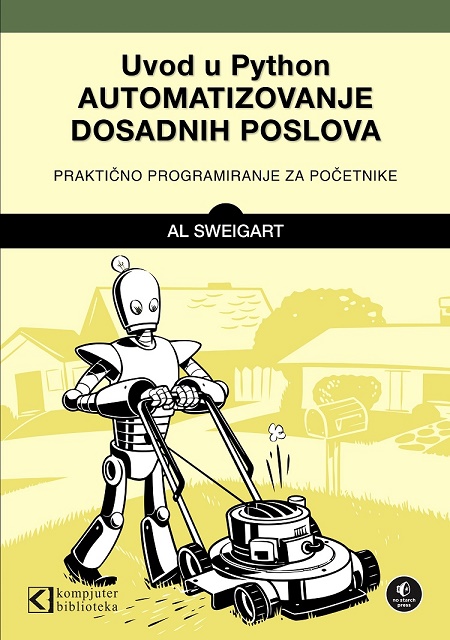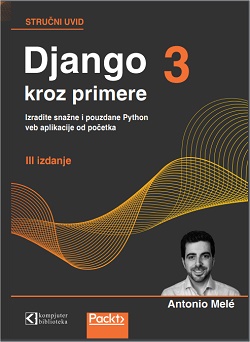

Articles, Tutorials and Talks
Anyone Can Learn To Code an LSTM-RNN in Python (Part 1: RNN)
This tutorial teaches Recurrent Neural Networks via a very simple toy example, a short python implementation.
Asynchronous Programming with Python 3
Python 3.5 introduced the new keywords, async and await to Python. This change solidifies a strong commitment towards writing asynchronous programs in Python. Before in Python 3.4, we needed to use parts of the standard library (using the decorator asyncio.coroutine). So, what does this all mean? In this tutorial, we are going to try and answer that question.
Episode #34: Continuum: Scientific Python and The Business of Open Source
What if you built a product that dramatically improved how hundreds of free, open source Python libraries worked together, gave it to the world for free, and then built a thriving business on it? It's the open-source dream really, isn't it? In this episode, we talk with Travis Oliphant from Continuum who did exactly that!
Comparing 7 Python data visualization tools
In this post, we'll use a real-world dataset, and use each of these 7 libraries to make visualizations. As we do that, we'll discover what areas each library is best in, and how to leverage the Python data visualization ecosystem most effectively.
Build a simple distributed system using AWS Lambda, Python, and DynamoDB
In this post, we'll present a complete example of a data aggregation system using Python-based Lambda functions, S3 events, and DynamoDB triggers; and configured using the AWS command-line tools (awscli) wherever possible.
Podcast.__init__ Episode 31 - Dariusz Suchojad on Zato
Service integration platforms have traditionally been the realm of Java projects. Zato is a project that shows Python is a great choice for systems integration due to its flexibility and wealth of useful libraries. In this episode we had the opportunity to speak with Dariusz Suchojad, the creator of Zato about why he decided to make it and what makes it interesting. Listen to the episode and then take it for a spin.
Machine Learning with a Data-Unfriendly Stack
Stripe processes billions of dollars in payments a year on behalf of tens of thousands of businesses, using machine learning to detect and stop fraudulent transactions and fraudulent merchants. Our modeling workflow involves the typical "data science" tools: R and IPython for exploratory analysis, Hadoop for batch data processing, and scikit-learn for model building. However, Stripe's production backend is written in Ruby and uses MongoDB as its data store, and this has introduced difficulties for both model training and production scoring. In this talk, I'll describe the various choices we've made to bridge "main land" and "data land" and how, in the process, our model development process has gone from terrible to "ok."
Digging Into the Pronto Data Release
In October Seattle's bike sharing service, Pronto, turned one year old and released a treasure-trove of data on the 140,000 individual trips during the first year. Here I want to dig into this data and answer a few questions.
Profiling Python using cProfile: a concrete case
Writing programs is fun, but making them fast can be a pain. Python programs are no exception to that, but the basic profiling toolchain is actually not that complicated to use. Here, I would like to show you how you can quickly profile and analyze your Python code to find what part of the code you should optimize.
Bayesian Modelling in Python
A tutorial for those interested in learning how to apply bayesian modelling techniques in python (PYMC3). This tutorial doesn't aim to be a bayesian statistics tutorial - but rather a programming cookbook for those who understand the fundamental of bayesian statistics and want to learn how to build bayesian models using python.
Z algorithm in Python
There are few algorithms for exact substring searching (e.g. Knuth-Morris-Pratt, Boyer-Moore etc.) This post explains one of them which is called Z algorithm.
The Geography of Basketball, Part II: Watching the Game in ArcGIS
A real Python "wat"
Practical Natural Language Processing with Hostel Reviews
Visualising Markov Chains with NetworkX
Books
Getting Started with Python Data Analysis
This is an easy-to-follow, step-by-step guide to get you familiar with data analysis and the libraries supported by Python. Topics are explained with real-world examples wherever required.
Interesting Projects, Tools and Libraries
tpot
A Python tool that automatically creates and optimizes Machine Learning pipelines using genetic programming.
Mining Georeferenced Data
A hands on guide on using Python to collect, analyse and mine geo-referenced data from location based services (e.g. Foursquare, Twitter) and the Sharing Economy (Uber, Airbnb etc.).
mailur
Mailur aims to become the future open source replacement for Gmail. It is already usable as an alternative Gmail interface with a set of unique features.
ElastAlert
ElastAlert is a simple framework for alerting on anomalies, spikes, or other patterns of interest from data in Elasticsearch.
birdseed
birdseed is a utility to create pseudo and/or "real" random numbers from tweets based on a particular search query over Twitter's API.
Zerotest
Lazy guy's testing tool, test your API server like a boss. Zerotest makes it easy to test API server, start a micro proxy, send requests, and generate test code by these behaviours.
Talisman
Talisman is a small Flask extension that handles setting HTTP headers that can help protect against a few common web application security issues.
Spinnaker
Spinnaker is an open source, multi-cloud continuous delivery platform for releasing software changes with high velocity and confidence.
tensorflow-deepq
A deep Q learning demonstration using Google Tensorflow.
Orator
The Orator ORM provides a simple yet beautiful ActiveRecord implementation.
rc
Redis cache cluster system in Python.
New Releases
Django 1.9 release candidate 1
© Sva prava pridržana, Kompjuter biblioteka, Beograd, Obalskih radnika 4a, Telefon: +381 11 252 0 272 |
||